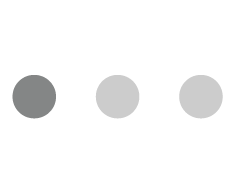Let’s take a trip back in time—2008. Netflix was nothing like the media juggernaut it is today. Back then, they were a DVD-rental-by-mail service trying to go digital. But here’s the kicker: they hit a major pitfall. The internet was booming, and people were binge-watching shows like never before, but Netflix’s infrastructure couldn’t handle the load. Their single, massive system—what techies call a “monolith”—was creaking under pressure. Slow load times and buffering wheels plagued the experience, a nightmare for any platform or app development company trying to scale
That’s when Netflix decided to do something wild—they broke their monolith into smaller pieces. It was microservices, the tech equivalent of turning one giant pizza into bite-sized slices. Instead of one colossal system doing everything from streaming to recommendations, each piece of Netflix’s architecture became a specialist—one service handled streaming, another handled recommendations, another managed user data, and so on.
But microservices alone weren’t enough. What if one slice of pizza burns? Would the rest of the meal be ruined? Netflix wasn’t about to let a burnt crust take down the whole operation. That’s when they introduced the Circuit Breaker Pattern—just like a home electrical circuit that prevents a total blackout when one fuse blows. Their famous Hystrix tool allowed services to fail without taking down the entire platform.
Fast-forward to today: Netflix isn’t just serving you movie marathons, it’s a digital powerhouse, an icon in platform engineering; it’s deploying new code thousands of times per day without breaking a sweat. They handle 208 million subscribers streaming over 1 billion hours of content every week. Trends in Platform engineering transformed Netflix into an application dev platform with self-service capabilities, supporting app developers and fostering a culture of continuous deployment.
Did Netflix bring order to chaos?
Netflix didn’t just solve its own problem. They blazed the trail for a movement: platform engineering. Now, every company wants a piece of that action. What Netflix did was essentially build an internal platform that developers could innovate without dealing with infrastructure headaches, a dream scenario for any application developer or app development company seeking seamless workflows.
And it’s not just for the big players like Netflix anymore. Across industries, companies are using platform engineering to create Internal Developer Platforms (IDPs)—one-stop shops for mobile application developers to create, test, and deploy apps without waiting on traditional IT. According to Gartner, 80% of organizations will adopt platform engineering by 2025 because it makes everything faster and more efficient, a game-changer for any mobile app developer or development software firm.
All anybody has to do is to make sure the tools are actually connected and working together. To make the most of it. That’s where modern trends like self-service platforms and composable architectures come in. You build, you scale, you innovate.achieving what mobile app dev and web-based development needs And all without breaking a sweat.
Is Mantra Labs Redefining Platform Engineering?
We didn’t just learn from Netflix’s playbook; we’re writing our own chapters in platform engineering. One example of this? Our work with one of India’s leading private-sector general insurance companies.
Their existing DevOps system was like Netflix’s old monolith: complex, clunky, and slowing them down. Multiple teams, diverse workflows, and a lack of standardization were crippling their ability to innovate. Worse yet, they were stuck in a ticket-driven approach, which led to reactive fixes rather than proactive growth. Observability gaps meant they were often solving the wrong problems, without any real insight into what was happening under the hood.
That’s where Mantra Labs stepped in. Mantra Labs brought in the pillars of platform engineering:
Standardization: We unified their workflows, creating a single source of truth for teams across the board.
Customization: Our tailored platform engineering approach addressed the unique demands of their various application development teams.
Traceability: With better observability tools, they could now track their workflows, giving them real-time insights into system health and potential bottlenecks—an essential feature for web and app development and agile software development.
We didn’t just slap a band-aid on the problem; we overhauled their entire infrastructure. By centralizing infrastructure management and removing the ticket-driven chaos, we gave them a self-service platform—where teams could deploy new code without waiting in line. The results? Faster workflows, better adoption of tools, and an infrastructure ready for future growth.
But we didn’t stop there. We solved the critical observability gaps—providing real-time data that helped the insurance giant avoid potential pitfalls before they happened. With our approach, they no longer had to “hope” that things would go right. They could see it happening in real-time which is a major advantage in cross-platform mobile application development and cloud-based web hosting.
The Future of Platform Engineering: What’s Next?
As we look forward, platform engineering will continue to drive innovation, enabling companies to build scalable, resilient systems that adapt to future challenges—whether it’s AI-driven automation or self-healing platforms.
If you’re ready to make the leap into platform engineering, Mantra Labs is here to guide you. Whether you’re aiming for smoother workflows, enhanced observability, or scalable infrastructure, we’ve got the tools and expertise to get you there.
Knowledge thats worth delivered in your inbox





